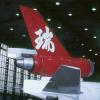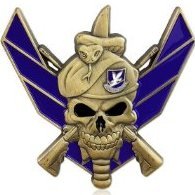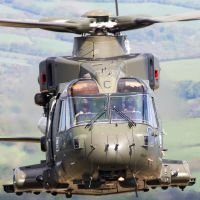Leaderboard
Popular Content
Showing content with the highest reputation since 17/06/25 in all areas
-
I am proud to present my completed Zoukei Mura F-4D Phantom in 1/48. This was built in the markings of the 497 TFS “Nite Owls” This build really pushed me to the limit especially once I reached the decal stage. I had some major silvering issues which required quite a bit of work to resolve. With this build, I attempted to replicate the weathering I saw when reviewing numerous reference images as close as possible. Along with the kit, I also used the following aftermarket items: •Reskit - Missiles, FOD covers, and exhaust nozzle •Quinta Studio - Interior 3D decal set •3D-Chute-Expert - Landing gear set •Mini Craft Collections - Ejection seats •Eduard - Remove before flight flags WIP post can be found here: Cheers, Keith102 points
-
Witam wszystkich. Przedstawiam model kolegi Avro Lancaster B Mk.I ex WnW , obecnie Border Models. Pomimo słabo narysowanej instrukcji, model został wyposażony we wszystkie dodatki zgodnie z bardzo obszerną dokumentacją. Model został przerobiony z wersji późniejszej na starszą poprzez wypełnienie okienek po stronie kadłuba. Wszystkie niezbędne części są dołączone, ale instrukcja milczy na ich temat, więc musimy polegać na dokumentacji. Poszczególne etapy klejenia modelu można prześledzić w magazynie modelarskim miniReplika, numery 121-123, który można kupić pod adresem: https://www.minireplika.pl/index.php97 points
-
Finished today - 1:72 Panavia Tornado IDS, Aeronautica Militare, M.M. 7461, Operazione Locusta, Al Dhafra AB, Gulf War, January 1991. Revell kit + Aires resin cockpit and wheel bays, SBS resin nose with Master metal Pitot tube, Eduard PE set, Hasegawa Mk.83 bombs, Tauro Model decals and some scratch. Thanks for watching!97 points
-
Hi everyone, here is my latest completed work. This is the original 1986 release of the 1/72 Fujimi F-4 Phantom "Sharkmouth" FRG.2 The kit was improved with scratch building. I used the original decals though some of it is out of registration. Rivet details are added to enhance the surface and add some visual interest. Painted with Tamiya and Mr. Hobby with mild weathering. I added a Reskit Matra-155, SUU-23 and maintenance crew. I made the base myself from wood and illustration board. Hope you enjoy the photos and thanks for dropping by.92 points
-
When Airfix released the Me 410 in 1/72, it was a real surprise. I was even more surprised when I opened the box. The new Airfix models like the He 111, Me 262, or Fw 190 were quite good, but still somewhat simple in some areas. The Me 410 is completely different. It is really beautifully detailed, and the gray plastic is not that soft. It is clearly a whole class better than the previous new Airfix 72nd scale new releases. The cockpit alone is a delight, and the assembly is very well thought out. One must not forget, we are dealing with 1/72 scale, and apart from PE seatbelts, nothing more is needed here. The other ad ons I did were a telescope and ASK 3D printed exhausts. Airfix made a smaller mistake regarding the clog symbol. The planes had this clog symbol pointing forward (in the directon you walk of course) but the Airfix instruction show them pointing backwards.. I used Mr. Paint for the camouflage and oilcolors for weathering.88 points
-
While building the first (Desert Storm) Tornado i made a mess putting the nose weight, so i figured i would buy another one since is cheap and use it's part, but after finishing the first build and seeing how well it went i decided to build another one and bought SBS Model resin nose + pitot tube and Eduard brasin seats, rest is oob. I wanted to make it a bit different so i chose another weapon setup and different tanks, also closed air brakes. Choosing this standard RAF camo came with ton of decals which were a real pain in the....so it dragged a bit. Paints used MRP,AK Real Colors, Tamiya and Mr.Color, Flory Washes, Mig weathering products and oils.88 points
-
Dear fellow Britmodellers, after a long absence from the workbench I report back with my 1/72 Revell Fw-200A Transport. The model was built from the box and painted with Mr.Hobby acrylics. Photographs by Wolfgang Rabel. Due to their age the kit decals are of poor quality. I swapped the national markings and walkways with aftermarket replacements and only used the code letters (note that the white frame around "DI" is out of register) from the original sheet. Thank you for your interest in this topic.86 points
-
Hi all, a little puddle-jumper from me and another Bomber Command subject in the form of Fairey's underwhelming Battle, light bomber. This is the new(ish) 1/72nd Azur-Frrom Fairey Battle Mk.1 that I recently finished for last month's issue of Airfix Model World. We've been after a decent Battle for some time, especially in 1/72nd and this one didn't disappoint. A delightful little kit that builds up quickly and really looks the part when finished. The only down side, for me anyway, was the overdone fabric effect on the ailerons and elevators. This was relatively straightforward to sort out. Rather than endlessly trying to sand down and reshape the kit parts I did what I normally do and raided the spares box. I managed to find some suitable replacements (can't remember which kit, unfortunately) that just needed reshaping and the addition of the three actuator hinges, per wing. Unfortunately the wing tip nav lights also needed a bit of work as they were moulded into the wing which I don't particularly care for. These were removed and small pieces of clear runner were shaped to match the profile of the wingtip. Before being glued into place, 1mm holes were drilled into each piece and Tamiya clear red and green, poured in. The landing lights were also replaced using a pair of Little-Lense reflective lenses and a superb Quinta Studios resin vickers K gun replaced the kit item. Another slight issue was that if you wanted the canopy open, due to the thickness of the styrene the pilot's sliding canopy didn't fit down over the rear section and sat too high. I opted to use a Falcon vac canopy (designed for the old Airfix abomination), which was hacked up and shaped to match the kit part. Due to it's inherent 'thinness' it sat perfectly. All in all very impressive, for what is a short-run kit.....hopefully Frrom will consider releasing the more successful trainer and target-tug variants in the future. I'm sure a few of these will certainly find a place on our Bomber Command SIG table. Finished as GR-F, L5048, of 301 (Polish) squadron, based at RAF Swinderby, Lincolnshire in August 1940. This was really just built as a prelude to the 1/48th Trumpeter version which will be started soon, now that all the replacement parts have been gathered...and there's a lot! Anyway, hope you approve and thanks for looking. 'Bomber' Melchie...(terror of the local swimming baths). Obligatory black and white...84 points
-
My 8th Harrier in 1:72 is finished - this time BAe Harrier GR.7A, ZD404, 33A "Lucy", Harrier Detachment, Kandahar 2006. Airfix kit + Pavla resin cockpit, exhausts and ailerons + Eduard TIALD pod + some scratch. Bombs are from Revell's Tornado and TACTS pod is from Hasegawa set. And here is an image of "Lucy" and "Michelle" Harriers in Kandahar. From the markings of the completed missions I guessed that these planes flew their missions in pair, with "Lucy" carrying guided bombs, while "Michelle" carried unguided weapons. I don't know if my conclusion is correct, but that was the reason why I decided on this weapon configuration for my "Lucy". And here is actress and model Lucy Pinder, after whom Harrier ZD404 was named in Afghanistan: 😎 Thanks for watching!83 points
-
At last, a day with no wind and a bit of cloud, so took the opportunity to take some photo`s of my latest effort My second go at Great Wall Hobby`s P-61 Black Widow, this time an `A` from the `Glass Nose` boxing....... ........my first being a `B` version a while back Built pretty much from the box contents Only additions being: aerial wires, replaced the kits etched engine wiring with copper wire as I remember wasting an evening trying to to fit it last time and ....... ....lastly a wheelbarrow full of bits of lead to try and keep the nose down........ ......which I succeeded in the end ( as long as a moth doesn`t fly into the room ) Decals were from an old Print and Scale set I had hanging about and caused much gnashing of teeth to apply and a few of the kits Hope you enjoy, thanks for looking Cheers Russ82 points
-
A good kit, not a great kit. And if you want to see what can be done with the model, have a look at Stephen Allen's WIP For mine, I just reduced the OTT surface texture by sanding it down after two heavy coats of SMS primer which helped to fill in some of the hollows. I probably should have gone further as the real aircrafts surface is far subtler than what Trumpeter have moulded. Anyhoo..... Brengun flaps have been added as have brass gun barrels from Master Detail. Fuel dump pipes are from Quickboost. Tooo late I discovered the Quickboost exhaust pipes needed the "outlet lumps" sanded off the cowlings to fit the correct asymmetric length resin pipes. As I had already painted my model, I left it as OOB Decals are by Xtradecal and portray a 149 SQN machine as I wanted to pay homage to those early war Bomber Command crews who started delivering the war to Germany soon after the war commencing. The early attempts at dulling down the roundels really appealed to me as something different. Never mind those stonking great codes! Yes, I need to straighten that aerial mast too! Thanks for looking Bruce82 points
-
Here is my recently completed SR-71 by Revell in 1/48th scale. The build posed a significant challenge, primarily because of the model’s impressive size (almost 70 cm), which made assembly and handling more demanding than usual. For the paintwork, I experimented with several shades from the Mr Paint range to accurately replicate the aircraft’s distinctive finish. For weathering, I tried the layered ink technique for the first time and was pleased with how it added depth and realism to the model’s surface. The result really brings out the sleek lines and iconic silhouette of the SR-71, a design that remains striking even today. It’s remarkable to reflect that this particular legendary jet first rolled off the production line nearly 60 years ago, on 22 July 1965.81 points
-
Hello everyone, Not the easiest model to build, but very well designed and detailed overall. However, the engine assembly is very tedious; I spent more time on it than on the rigging. Painted with Alclad, MRP, and Zero Paint. The decals come straight from the box. They are very thin and apply very well. The silvering visible in the photos is invisible in real life. Pictures : I hope you enjoy. Alain79 points
-
Hi everyone, one of my recent builds where I combined the Arma Hobby Mustang Mk.III kit with Eduard 3D printed engine compartment. Since the engine set was in fact designed for their own P-51D kit there was some surgery needed to convert it into B version. This mostly comprised revision of the bottom engine compartment and omission or replacement of some items. Decals from the kit were used for markings of Wing Commander Stanisław Skalski, 133 Fighter Wing, RAF Coolham, Great Britain, Spring 1944. Cheers Libor79 points
-
Hi all! wrapping up the final Phantom for a while. Ive been trying to complete my 1/48 Phantom's that i will be entering into the 2025 IPMS National Convention here in the states in August. I have 12 1/48 F-4's that i will be entering into the collections category so wish me luck! Now just trying to sort out the logistics of transporting This is one of my all time favorite F-4 Schemes. Its Hasegawa's venerable 1/48 that will actually be re revealed in the future as this kit shared parts with a future build that ill work on next year. That version of the F-4 has never , ever been modeled so looking forward to that reveal...stay tuned. The Israeli scheme is really impressive if done right and also one of the most complicated schemes ive ever done. I have been using the blue tack method for masking and i really like the in scale feathered edge it gives with consistent edges throughout. This kit depicts a very early ,circa 1972 F-4E and obviously played a vital role in the Yom Kippur war. The early Israeli F-4's are easily identifiable as they did not have the leading edge slats, refueling probe and extended gun muzzle of the later E's. This was done in all Vallejo Air, left over PE from other Phantom builds, exhaust from a Academy kit, and 3D printed pylons from a company called Phase Hanger here in the U.S. I decided to leave this jet bare and unarmed to really highlight the actual aircraft, paint scheme and the pylons. Im having 2nd thoughts now about re arming? And for weathering, if your looking for a jet dripping with oil and streaked from front to back you be disappointed. I have taken a barley there approach lately with very subtle weathering on most of my projects. Now the lower side of any F-4 is just dirty and cannot be avoided. There is subtle post shading of all 3 colors, panel lining was done with AK real colors light gray. Anyway, thank you for looking! *This photo shows the attention in getting the front canopy correct on any F-4. Modelers tend to build up the bottom area and paint a frame there and there really is none. The canopy needs to look like its inserted into the airframe The is a very slight structure there on the real thing but nothing to have to reproduce in kit form.77 points
-
The 2nd of my Eduard P-40E's from the Royal Boxing. The first one is here. This one was done as an aircraft from No. 15 Sqn RNZAF using Ventura Decals. Everything else was from the kit but I did add my own antenna attachments. I wondered about the shade Malcolm from Ventura chose but figured he's spent way more time on this than I so decided to go with his interpretation. The B & W pictures do suggest a lightened shade but I'm not good with interpreting colour from B & W images. Ultimately we'll never know for sure and TBH I doesn't really bother me either way. I like it. Most of the paint used was per the instructions. The main colours used were as follows: Dark Green - Mr Color C330 Modern RAF Dark Green Dark Earth - Mr Color C369 Dark earth, some yellow, and some radome tan Underside Sky - Tamiya XF21 Sky - This was because I read somewhere that the RNZAF P-40E's had a slightly greener shade on the underside. As this aircraft was taken over from the USAAF this was probably the wrong decision. Interior Green - Rather than the mix from the instructions I went for a colour similar to RAF's interior green. This was because I read somewhere that the RNZAF aircraft had lighter green interiors. Like the underside , as this aircraft was taken over from the USAAF this was probably the wrong decision. As usual more details for those interested on my blog but here's some photos76 points
-
Hi all! My most recent model, finished today! Very good model but great care must be taken not to spoil the small surface details. There are some problems with some of the fittings, but nothing that detracts from the model. The assembly engineering could be simpler, resulting in an easier and less stressful assembly at times. I really liked this project and was very happy with the result. I hope you like it as much as I did. Have a good week everyone, Claudio76 points
-
Hi all, my latest kit is this new Eduard P-40E in 1:48. Built it out of the "Pacific Star" box - hope you like it!75 points
-
I made this model as a memorial tribute to my second cousin Donald Schneider, who was a member of the first course of six RCAF Starfighter pilots. He was killed on a low level training sortie in 1963, while serving with 427 Squadron in Germany. Built more or less straight from the box but with gun port filled. Paints are Tamiya. Decals a combination home made (stenciling, serial numbers) and Belcher Bits. Nuclear bombs are by Air-Graphics. Thanks for looking. Greg75 points
-
This was something of a personal project for me. Firbeck, in the old West Riding of Yorkshire, was the closest WWII airfield to where I grew up and I’d often visited the old museum close by (now relocated to and expanded at Doncaster Aeroventure) and the excellent Black Lion pub in the village. About 25 years ago there used to hang above the fireplace in the Black Lion a large painting of ZR.F taking off from the old grass airstrip and since then I vowed to myself that one day I’d build a decent model of that Lysander. The advent of both the new Airfix kit and the superlative Wingleader book on the Lysander gave me all the impetus I needed to get started. The Wingleader book includes two full-page photos of ZR.F taken at Firbeck, although the location is not mentioned in the text (PP. 34-5). The copse in the background on page 35 is still identifiable today. The new Airfix kit is almost vice-free and an absolute pleasure to build. I only needed a little filler for the engine cowling and the horizontal panel line just in front of the windscreen. I did add a couple of extra details (e.g. metal wire for the aerial masts) and the 613 squadron codes + fin flashes came from an old Eduard kit in the stash. ZR.F was delivered to Firbeck on March 2, 1941. The squadron conducted tactical reconnaissance missions (anti-invasion) over the North Sea coast, training and gunnery flights, and gas trials close to the unfortunate burghers of Pocklington. 613 Sqn. seems to have departed Firbeck for Doncaster by mid-August and began converting to the Tomahawk Mk. II. All in all, research and building time very well spent!75 points
-
I’ve honestly lost track of how many “I’m back at the workbench” builds this is by now, but hey, it’s done, and the motivation to keep going is enormous right now. The Luftwaffe Starfighter in its Norm 62 camo is pure childhood nostalgia and aircraft fascination for me. I had it on a Luftwaffe poster as a kid, I brush-painted one in 1:72, played with it – in short, there was proper passion involved in this build. The Eduard kit, complete with PE parts, canopy masks and a resin ejection seat, is full-on luxury. Went together beautifully – fit was excellent and made for a very enjoyable build. Especially noticeable when you’ve got the Kinetic Sea Harrier lined up next and suddenly learn what a real gap looks like... I went with the "26+24" – there are some decent photos of it online. Decals are from a specialist for German military aircraft, HaHen, and honestly, the decals were my biggest issue. Since they’re printed on continuous carrier film, they need to be cut to shape. And I, not thinking, cut them out with scissors and the backing card. What I should have done was cut the carrier film precisely with a scalpel and leave the paper intact. So now I’ve got way too much clear film around the decals, and it just refused to disappear. I used a generous coat of Humbrol Clear before decal application, then MicroSet to settle them down, pressed everything in nicely, smoothed out air bubbles, and sealed with several layers of Clear – still too visible. Lesson learnt: cut to shape next time. And I might switch back to Future/Klear as my gloss coat before and after decals. Oh – and yes, I did take some pics too: And a gust of wind flipped the 26+24 over: But it got on its wheels again, flew off and visited JG71:73 points
-
The workbench has recently looked like a hand grenade was dropped on it, 3 builds on the go with similar parts, the perfect recipe for a cock-up! Really enjoyed doing them though, Airfix really hit the mark with my aviation interests, although the Blenheim's fought a little at times. There is some speculation over colours on the Beaufort and Blenheim Mk.I, and I've mixed some of my own shades on the light Mediterranean blue and light earth, but not too bothered as long as they look about right. All paintwork is MRP lacquers. The builds are here: With 3 builds, I've not included all the pics, but there are a few more in the link below: Bristol Builds I haven't fitted the ASV aerials yet, but need to either get some or make some. Thanks for looking72 points
-
Buffalo Mk.I, ex RAAF No. 21 squadron, Dutch East Indies Air Force, Andir (Java) air base, March 1942. Almost from the box, I have just added a printed gunsight by U3D and Master pitot tube. All paints are AK Real Colors, decals by Dutch Decals and Gunze varnish. Thanks for looking.71 points
-
Hello All Here is my take on the well known Airfix Folland Gnat T.1 in the Yellowjacks Aerobatics Team colours, c1964. Overall, it's a lovely little kit except for the panel lines which, like a lot of the newer 1/72 Airfix kits, are far too wide and deep. I decided to try a new method (to me)and filled them with 3D, UV cured resin, then, instead of re-scribing, I drew them on with a 0.3mm pencil after painting. The access panels (of which there are many !), were created as svgs and printed onto clear decal paper. The only add ons used were Wolfpack Resin seats and SBS resin wheels, although to be honest, the kit's wheels aren't too bad and could have been used. I decided not to use gloss yellow as I felt that I wouldn't get a realistic finish. Instead I opted for a matt yellow finish, then built up the gloss gradually with multiple coats of Johnson's Pledge. Being all yellow, I thought that the end result may end up looking a bit bland and toyish in the small scale, so to give it a bit of character, and after looking at some online photos, I decided to spray the upper wings and rear fuselage a slightly different shade of yellow. Paints used were predominately Vallejo Model Air with some Tamiya and Mig Ammo. Decals were OOB. The more observant will notice a lack of rear seat windshield. This is not a kit part and something that I did try to scratch-build. However, the actual item is made up of multiple compound curves and I just couldn't get it to sit properly, so gave up ! Thanks for reading and taking the time to look. Comments and critiques will be most welcome. Gary70 points
-
This is the second Hobby Boss 1/48 A-6 I've finished this year, and these kits are a bit of a slog. Please Tamiya, can we have a new one? To this kit I've added ResKit wheels, Hypersonic seats, exhausts and fin tip and Master turned metal accessories. The decals are a mix of AOA and Furball. I've made a lot of alterations and corrections, primarily the scratch built tail hook cover, corrected doppler radar cover, corrected surface details and reconfigured the wing tip lights. The finish is much more 'quilty' than I would like, principally because of all the erroneous rivet detail. It's an impressively sized beast, though! Comments welcome Jon69 points
-
After a prolonged battle, I have completed the old Short Rangoon vacform released by Contrail in the 1980's. This is my second attempt. The one I started in the 1980's when I was a teenager that ended in disaster. Fast forward a lot of years, and finding the kit at a dealer's table for a modest sum. Duly purchased and onto the workbench a year ago. I had mastered cutting out and sanding the parts. Assembly required a lot work and a lot more two-part autobody filler. The big challenge was getting the top wing on with the three engines with inverted struts in place. I made all of the engine struts out of brass rod (I know, they are round and not airfoil shaped) for strength. I made a jig and after hours of foul language and I managed to get the top wing on. The engine bearing struts were made overlong and went right through the bottom and top wings. After this hair-pulling experience I did not have the strength to rig it. I just tell everyone I used invisible thread and that is why you can't see it. I am pleased with the result, but I noticed the gap between the top and bottom wing is too small. Oh well, that is life. At any rate it looks like a Rangoon. The model was painted with Alclad paints and the guns were Aeroclub items in the stash. Roundels by Xtradecal (had to buy a 1/48 scale sheet to get the correct size for he wings), and serials from the kit decal sheet. My stash holds several old vacforms. What next, maybe a SARO London? Not this year.....! Cheers, Kerry Vancouver, Canada68 points
-
My rendition of the very nice Trumpeter kit of the mighty Wyvern in 1/72. Despite Trumpeter's variable reputation for accuracy I have never seen any adverse comments on this kit, which I think caputures the brutish lines of the this aircraft very well. It is huge for a single-seater - must be twice the size of a Seafire and way bigger than contemporaries like the Sea Hawk and Sea Venom. wyv6 wyv1 The kit went together without any particular vices - it needed a little care if being built without the wings folded to avoid a bit of a step where the inboard and outboard wing sections meet, but nothing major. I (carefully) removed the rockets from the rails to display this unloaded as per the pic I found of VZ773. wyv7 wyv5 Colours were in my favoured Xtracrylix XDSG over Gunze Aqueous Sky, with decals mostly coming from generic sheets to represent this machine from 813 NAS - the squadron badge is from the Trumpeter decal sheet. I have had a bit of an educated guess that the spinner is white and red from studying a b/w photo of this aircraft. The camera apertures in the fuselage sides were painted/plated over in the pic of this aircraft so were given the same treatment here. wyv3 wyv8 Hope you like! Pat wyv467 points
-
Greeting all. Haven't posted here in awhile, so I thought I'd share this one. This is the old ancient Monogram kit, dated back to around the late 70's. The kit had some deficiencies, notably the undersized cowl. I replaced it with the old KMC correction set. But the correction set needed corrections itself. The outline profile needed to flatten a little. It's way to curvy compare to the real thing. And the panel hinges needed some corrections also. All the pylons wree discarded. They were way too useless to salvage. The Quickboost set is much better. The cockpit was replaced with the old CMK set, mainly because of the outstanding bucket seat it had. The landing gears was cut in half and replaced with a rod about 1.5mm longer. In my opinion, the legs are way too short. If you look at the box pics, the centerline fuel tank is almost touching the ground. I added new antenna configurations to the VNAF standard. Their's was much different than the USAF version. Those were the major corrections I made; there were others also. But I'll let the pictures do the talking. The model was completed in 2021, but I hadn't had a chance to take photos until recently. This ancient, old kit is way past its time, and is outclassed by the Tamiya kit by far. But here it is; the 1/48 scale Monogram A-1H Skyraider in marking of the VNAF 516 Fighter Squadron in 1967, Da Nang VN.66 points
-
This is my attempt at building the Italeri 1:48 Wessex UH5. The scheme I settled on was a Search And Rescue aircraft based in Culdrose, Cornwall as I had my honeymoon at Mullion Cove and we’d see these flying overhead almost every morning. Due to limited display space, I thought it made sense to acquire the Scale Warship rotor fold set which was quite fiddly but saves so much (display) space. I also bought the Eduard (external) PE set, unfortunately they’ve discontinued the interior version, which adds some extra nice detail. Almost impossible to see even though I’ve left to cabin door open, I added some equipment bags and rescue strops as well as some additional detail. I managed to attached the side antenna poles 90° off kilter, I decided to leave them incorrect as I figured I’d mess-up the paintwork if I removed them and re-stuck them, so squint your eyes and imagine them correctly positioned. You can read my build log here: until next time as always, any suggestions, criticisms or comments will be gratefully received. rgds John(shortCummins)65 points
-
Hi All, My latest completion is Airfix' lovely Wellington, completed as a Mk.Ic R1378 of 311 (Czechoslovak) Sqn, based at RAF East Wretham in 1941. Here's a photo of the aircraft (the middle of the 3): As you can see the scheme is quite unusual, with the wavy camouflage demarcation, the blacked out roundel and the lack of beam windows. The build was pretty much OOB, albeit with an Eduard mask set. The markings were cut using a Silhouette Portrait 3. Here's the WIP if anyone is interested: Anyway, on with the photos! Here's a couple of shots with another twin-engined Bomber Command stalwart from the early war years: And with a couple of accessories from the Bomber Command resupply set: This has been a thoroughly enjoyable, straightforward build and I am pleased with the outcome. Thanks to all who have added kind words along the way - it has been much appreciated! Thanks for looking, Roger64 points
-
Going to Duxford in the early eighties you could often see one or two white Dakotas parked up, with bright coloured stripes on them. Part of the Air Atlantique fleet. And G-AMPO, with her green stripes stood out in my memory. So moving on to last year I picked up a Monogram 1/48 DC-3 and thought about those wonderful looking aircraft. Decals would be a struggle. Or would they? Ray at 26 Decals offered to scale up his 1/72 set. So here is the result of my plastic kit worrying and those decals prop decals were missing in the photos above but are now present And she has working lights & motors too Thanks for looking64 points
-
You don't see too many of these finished ! I began this one I would guess in 2010 which means that it took approximately as long to finish it as the real aircraft's ~15 year service life in the Fleet Air Arm. This had multiple spells on the shelf of doom and even a spell in the shed of doom where I rescued it last year covered in dust and spider poop. When the Cyber-Hobby kit came out in 2011 I was on the verge of binning this but given the C-H's accuracy issues I decided that I would persist with the High Planes version which does capture the outline of the original in a far superior way. I'm glad that I stuck with it sv5 sv3 High Planes kits are old school limited run moulded in light blue plastic with huge sprue gates to file off, resin wheels and undercarriage plus a vac form canopy. Finer details such as the intake vanes and the wing fences have to fabricated by the modeller from thin plasticard. Getting the intake vanes in and parallel was an excercise in persistance and staying zen calm! The resin tailpipes are see through but fortunately I had a couple of Avon tailpipes from Revell Hunter kits that filled these quite nicely. sv12 sv1 Vast amounts of sanding, filing and filling are required, although I do think that the overall shape is pretty good. No fewer than 3 vac canopies were ruined and I was very grateful to Christopher from HPM for sending me some replacements from Singapore!! The navigators window had to be drilled out and then was filled with a rectangle of clear acetate that my son kindly fabricated using his school laser cutter (shhhhhh!). The refuelling probe and the Red Tops were leftovers from the Cyber-Hobby FAW1 kits, and the pitots are from Master. The loadout was finished with a couple of RN rocket pods from Freightdog. sv11 sv2 Paint was Xtracolour XDSG over white but unfortunately the kit decals which are by Fantasy Printshop and were quite nice had been ruined by damp in the shed and so my depication of an 899 NAS machine had to come mainly from the spares box and generic decal sheets. There is an eBay seller who sells a lot of decals from Xtrakit kits and I was able to source a Sea Vixen one for the hatchings on the engine decking which would have otherwise been very challenging. Hope you like! Pat sv6 sv464 points
-
For anyone familiar with the Battle of Midway, there's almost no need for introduction on this one. For those that aren't: The SBD Dauntless was the US Navy's primary carrier dive bomber at the beginning of US involvement in the Second World War and its most successful despite being considered nearly obsolete at the beginning. Nicknamed the "Slow But Deadly", it sank more enemy tonnage than any other dive bomber in the world. During the Battle of Midway, as the Japanese Navy's carriers sought battle at Midway Atoll, it was the SBD-3 Dauntless that delivered the killing blows to Japan's most powerful carrier force only six months after that same carrier force attacked Pearl Harbor. In a split-second decision, without which the US victory wouldn't have been as complete, this one aircraft, piloted by Lt. Richard Halsey "Dick" Best of VB-6 of the USS Enterprise, delivered the lone bomb that, in a single hit, sunk the Akagi, the flagship of Admiral Nagumo, and later in the day also attacking the Hiryu, the last remaining carrier of the battle. His actions that day rewarded him a Navy Cross and a Distinguished Flying Cross. - This build was a commission for a friend whose son had picked up an interest in the battle after watching the 2019 movie. Though meant to be more of a toy, I decided to build it to the degree of any of my other builds, and certainly didn't complain about the excuse to build an SBD myself. I finished it in the morning of the Battle of Midway's 83rd anniversary last June 4, only getting around to posting it here now. This was the boxing featuring the USS Lexington in the box art, meant to model SBD's participating in the Battle of Coral Sea, with the pre-Midway single machine gun at the rear gun position. As such, my only modification was 3D printing a pair of double-barrel machine guns. Other than that, and the decals for the SBD itself featuring Best's aircraft, which I designed myself and had printed by Siamdecal in Thailand, everything else is OOB. For the kit itself: This and the Hasegawa are pretty much the only choices for the SBD Dauntless (I believe the Academy is just a reboxing). For its age, the AM kit is pretty good though there are a few frustrations here and there. The cockpit assembly was somewhat tedious for what it was (At the end of the day it just looks like any other 1/48th OOB cockpit. Areas I had an issue with were the dive flaps, which were attached on the sprue in such a way that even if you were careful they came out warped and had to be kind of wrestled in place. I also had that issue for the three-piece canopy, which, if you wanted it open, would have to stack into each other, which naturally resulted in a lot of sanding and fitting. Finally, the decals - Pretty sure my boxing is just old, but almost all of mine shattered, and whichever ones didn't, silvered quite a bit. Overall decent kit, still good for its age, though not perfect. A couple other notes - - I'm aware that Dick Best himself described his aircraft as clean as they were relatively new, and photos of other SBDs near the time of Midway confirm a relatively clean although used aircraft. In the end I decided to go with more weathering anyway for my own practice of weathering techniques, something which led me to learn a lot from this build. - Alongside the OOB decals that silvered there are also a few that I had printed that silvered - some of these I'm not sure why, because they went down fine but a flat coat changed the color underneath. Still trying to figure out why this is. Thanks for reading!64 points
-
There is no WIP for this build, it's taken about twenty years to get it to the finishing line! A survivor of three house moves, some lost parts along the way. That along with a paint strip last week. I had purchased the Caracal decal sheet (CD72065), which is superb and offers ten options. Unfortunately I couldn't build the Black one as it had too many fuselage appendages for where I was with the build. I had always wanted a Black U-2, ever since the days as an Air Cadet, reading RAF Flying Review magazine. The exploits of Garry Powers etc, flying out of Japan with overflights of the USSR. The kit is a delight to build with some subtle contours but raised panel lines, these were lightly re-scribed. I opted for an o/a Glass Aluminium /Day-Glo Red scheme as a second alternative! I primed the wingtips etc, with Humbrol Yellow as a base (reading somewhere that it gave a good base for the Day-Glo). I then shot Tamiya TS-32, decanted into the airbrush, This was then given a coat of Tamiya Clear TS-13. This being a lacquer based paint pickled the Yellow! A strip was in order! I use a product called Oxytol, it's a water soluble stripper. Moving ahead, a chance search on the intergoogle and a pointer from my mate Tony O'Toole, gave me an all-over Black ship and a re=paint was in the offing. I's using more of the Taliya LP paints but an finding them increasingly expensive, due n the main to our poor exchange rate! Dulus have a range of Duco, solvent based lacquer paints in a 300ml can. There LP Primer (available in Grey or White) is styrene friendly, so I shot their Satin Black via my airbrush. The first coat was as decanted from the can, a second coat thinned approximately 30% was shot a s a final coat and left to dry overnight. The maintenance/warning placards are from the Caracal sheet the fin codes form the spares box. The base is a scrap piece of ply suitably cut to size, with the edges chamfered and given a coat of sanding sealer. The card is Carson sugar paper available in grey or sand and gives a reasonable representation of concrete and Fine Line marker. The RAF crest came from the net. The story or 'Operation Oldster' can be found via a net search. Thanks for looking in... Colin64 points
-
I have finished my 1/48 Eduard Spitfire Vb representing my Aims decal options 'JU-T' 'Little Audrey' of 111 Sqn, December 1941, Debden, Essex. Note that the machine sports the latter blown hood and windscreen. The Eduard kit has been further detailed with the Eduard Mk V cockpit set and armament set, plus wheel and exhausts and radio compartment sets. The door is from Barracuda Studios to which I added a crowbar and the decals are from Aims sheet 48D028. I also used my Aims RAF wheel chocks. Paints are mostly MRP. Thanks, John64 points
-
Deep in some rabbit hole the other day, for some reason I was watching a clip from a John Wayne movie, "They Were Expendable". We've all seen the ubiquitous AT-6 asJapanesezeros before and this movie has them. Less seen are the Douglas Dauntlas asJapaneseaircraft and this movie has those as well. I was just about to click off when the Duke comes under attack yet again but this time I was amazed at what was attacking. "Wait a second, is that a...." "Wow! It is, now THAT I've never seen before..." A perfect candidate for the collection. It was about the only olde 1/48 Monogram I did'n have but Evilbay fixed that for $12.00 and free shipping. Built as we did years ago, the "Hollywood Air Force" is strictly for quick fun. Assembled in about an hour and painted that night. Decals and weathering went on the next day. These old Monogram kits are a blast to put together, everything fell together perfectly. I used some Vallejo 71.298, FS36357 that I just grabbed but seems to match IJN grey perfectly. I would not hesitate to use it on a serious Japanese build. I don't know if I should build something more serious or jump onto the Glencoe Duck from "Murphy's War".62 points
-
For the realization I used a slightly modified G-6/AS ‘overtrees’, while the decals are taken from the AIMS 72D029 sheet. The model represents the aircraft piloted by Maj. Friedrich-Karl “Nasen” Müller, of the 1./NJGr. 10, a unit specialized in hunting Mosquitos, operating from Werneuchen in August 1944. The colors used (RLM 74, 75, 76 and 22) are Gloy and Humbrol, applied as always only with a brush. Model completed in 2025. The undersurfaces. Hope you like. Thanks for viewing Giampiero Piva60 points
-
Greetings. I got back into modeling last year when I retired and have a little Youtube channel to do build vlogs. I live in the US but am a UK citizen (got it recently) and want to move over there. The kit was PRETTY good with some omissions and issues. But it's a great subject. Back in the past, I did large scale RC planes and had a 1/5 scale and 1/4 scale Spitfire. Build vlogs:60 points
-
This is the well-known Airfix MiG-17F, with the addition of a Neomega KK-2 seat, Eduard Brassin wheels and Eduard cockpit details. I also used Eduard masks and Berna decals for a Ugandan aircraft. There are a number of problems with the Airfix Fresco, some of which are easy to fix (lack of engine access panels, panel and control surface lines that weirdly don’t go to the edge of the horizontal tail surfaces, lack of radio altimeter aerials) and others that are harder (blunt inner wing profile, too short ventral fin). Guess what? I fixed the easy ones and left the rest. The only photo I could find of in-service Ugandan Mig-17s was in Gordon and Komissarov’s Soviet and Russian Military Aircraft in Africa. This showed them in what looked like an earth brown and medium blue camo, over light grey undersides, with aluminium tanks; with only a side-view to go on, there’s some artistic licence in the camo pattern I have applied. Colours I used were: Undersurface - FS 36375 Mr Hobby H308 Uppersurface - Flat earth Tamiya XF-52 - Medium blue Tamiya XF-18 Metal areas - Assorted Vallejo Metallics I faded the upper surface colours to reflect time under the African sun and dirtied up the finish with Flory washes, especially on the undersurfaces. I've just noticed that some paint has come of the nose wheel tyre - I'll fix that.59 points
-
Built pretty much straight from the box except for some Eduard seatbelts. Despite my initial apprenhension regarding the rivets, after a brisk rub over with some Scotchbrite I think they're much more acceptable now, even in a silver scheme. I'd certainly have no qualms about building another one. The decals are from the kit and a spare sheet of Max decals for the later style Celtic Boss. Thanks for looking. 3 2 4 5 659 points
-
Good afternoon. I just finished the new tool 1/72 TBM-3 Avenger from Hobby Boss. I find it a really beautiful kit with a lot of detail inside out. I think it’s a down scaled version of their 1/48 kit. I added a little Eduard PE in the cockpit and bomb bay(for the Hasegawa kit), other than that it is out of the box. The fit is very good for the most part, but the smaller clear parts need some trimming to fit well. Painted with Hataka acrylics and weathered with A.Mig wash and AK water color pencils. The base is from Laser Model Graver. Here it is and thanks for stopping by.59 points
-
IMG_0977 by Ben Brown, on Flickr 40 years ago this year – when modelling was just pure fun…. Back in 1985 Kelloggs decided to release a series of push together model airliner kits to give away as freebies in their cereal boxes…. Moulded on a single sprue they came in a variety of colours to increase their swappability in the playground! For more info and to see the original TV advert click here! https://www.youtube.com/watch?v=2EH4l9Pnwos The series included: Vickers Viscount Vickers Viking Armstrong-Whitworth Atalanta Short Empire flying boat Boeing 747 Lockheed Tristar BAC Concorde de Havilland Comet They weren’t modelled to a specific scale, more the sprue size which was the same for all models. Reports vary as to who mastered them – either Rareplanes or Rosebud Kitmaster (the latter had already moulded other items for Kelloggs and the selection has a UK bent)- and they’re rather lovely, complete with undercarriage and props, window detail etc. They are made from a vinyl type polystyrene which accepts liquid poly cement. They fit together pretty well as they are designed to push fit but a bit of filler helps. IMG_0973 by Ben Brown, on Flickr My latest is Vicker Viking I G-AGOL which I chose as she was the second prototype (later went to the RAF as VX238) with a simple all over silver scheme. Also she was the aircraft selected by Dinky for their diecast version. I wasn’t sure about the colour of the serials but went with black – she MAY have had blue spinners - I went with that to add a bit of colour. IMG_0975 by Ben Brown, on Flickr Fuselage is two piece, two separate tailplanes, two separate wings, a pair of UC legs with tyres and a brace of props – and you’re done. Primed with Rustoleum white plastic primer and hit with Humbrol polished aluminium metalcote. IMG_0976 by Ben Brown, on Flickr Detail painting with Humbrol enamels. The pax windows are moulded proud of the surface – there is no help with the cockpit glazing, that was painted with enamels over the acrylic spray then the framing scratched with a needle to reveal the silver. Decals were some ancient Aeroclub ones – the fuselage codes are slightly too large but all I had – the wing ones are ok. Coat of Klear and she was done! Added to the previously built Empire (on a seascape), Atalanta (replaced her tyres with O rings and put on a sandpaper base to represent ops in Egypt) and Tristar (painted as an RAF tanker). Hope they made you smile – a reminder when we we’ren’t worried about accuracy, panel lines, decals or rivets… just finishing our cereal to get the model then rushing to put it together whilst watching Terrahawks or Battle of the Planets on a Saturday morning… did I mention that was FORTY years ago!! TT ps as a side note the Viking first flew on 22/6/45 almost exactly 80 years ago 🙂 IMG_0978 by Ben Brown, on Flickr58 points
-
Here are a few mediocre shots of my recently completed 1/72 Flyhawk SBD-2 Dauntless. I finished it as an aircraft from the USS Lexington at the Battle of Coral Sea. The Flyhawk kit is pretty nice, and fit fairly well. Some of the small parts are very fine and break easily. I broke the arrestor hook, one of the small bomb sway braces (somehow didn't break the large bomb harness) and a few other bits. I painted my model with Gunze Mr. Color paints thinned with MLT. A bit of weathering was done with oil colors. These photos don't capture it especially well. I used the kit decals, which were excellent! The kit also came with resin wheels, and included a very nice set of tape masks for the canopy parts. Overall, a very nice kit, with a few points off for the fragile plastic and the less than stellar instructions. A-57 points
-
Its been quite a while since I posted something. Work and life kept me from being too much online and on BM. Modelling came also a bit shorter than usual. I have a lot of models finished late 2024 but still not photographed and posted. They will appear in a while... This one was done earlier this year and was a pretty much straight forward build. More or less built oob ,the only thing I enhance a bit was the cockpit... not much can be seen of it now...🫤. I always wonder why I keep on detailing cockpits or other parts of a model,when I know pretty well,that not much,if anything,can be seen in the end...must be some kind of modelling stubborness😉😊. This is my second Heller 707 and as the previous one,its a troublefree build. It looks very good but for its size it could do with a bit more details,still it builds into an impressive model of this classic jet. The decals are from 26 and are of the usual good quality. Simbair was a subsidiary of East African Airways,a joint venture between Kenya,Tanzania and Uganda,as can be seen from the livery. Cheers Alex "Lions" also appear sometimes on the Nairobi apron...May I introduce "Speedy" 😉57 points
-
Hello fellow modelers. Here is my stab at the Tamiya P-38F. What an awesome kit this was! But of course, with my ridiculous passion for details, I added a few after market parts; Quinta 3D cockpit decals, Master P-38 Gun Barrels, Fine Molds USAAF Seatbelts, HGW P-38 Stencils/seatbelts, and Kazan P-38 3D Landing Gear Prints. Painting was accomplished with various MRP green and brown shades with final color being Mr Color Olive Drab. Underneath was predominantly MRP Neutral Gray. Hope you like it! Feedback and suggestions are always welcome. History: This P-38 was piloted by Captain Robert (Bob) L. Faurot of the 39th Fighter Squadron out of New Guinea and sadly was KIA during the Battle of the Bismark Sea on March 3, 1943. His loss was felt by many. The radio and office before closing it up.57 points
-
Evening all, It's been a long time since I've been able to share a completed model on here due to a house move, so it's pleasing to finally have something new off the bench. This is the tidy little T-2C courtesy of Wolfpack. Built straight from the box using the Top Gun edition for something a little different, finished in mostly Mr Color paints. A few errors along the way but a nice kit to ease back into the swing of things with. Thanks for looking, comments welcomed Shaun57 points
-
Hi all, thought it was about time to bother you with some pic`s of my latest CBI effort 🙂 My attempt at Smer`s 1/48 Walrus kit Finished as a Far East based aircraft in the `Shadow Compensating` paint scheme Built virtually as Mr Smer intended with just a few improvements here and there to disguise its shortcomings ( hopefully! ) Left out the dodgy guns and crew and closed the positions ( most of the photo`s I found whilst searching had covers fitted ) which saved having to detail the interior too much, yeah I know I`m lazy🙄 and sanded quite a bit off the wing and tailplane leading edges to make them less `Lego` like in appearance. Did some detailing externally, such as: wired the engine and made some exhaust stubs and piping, fashioned a landing light, some control surface actuators.... ......and made some, what I think are hydraulic pipes for the wing locking mechanism I noticed, from wire and a bit of side wall detail and seat belts in the cockpit Decals came from part of a `Classic Airframes` sheet I had hanging about Hope you enjoy, thanks for looking Cheers Russ57 points
-
This is the latest boxing from Zvezda, used Quinta set for interior and resin wheels from Reskit, everything else is from the box. I did some riveting since the kit is very bare with details, and with shallow panel lines. Clear parts are really weird, this is the first time i worked on some Zvezda kit and they do not like to be sanded or polished and are very flimsy overall bad engineering for very simple plane. I've opted to not use the engine and luckily they give you the option to leave it out if you don't want to. I mainly used Real colors for painting and some Mr.Color, weathering with Flory washes, Mig weathering products and lot of oils.56 points
-
This is my latest completion. Well nearly completed. It still needs a drop tank 🙄 Anyways Heinrich Bartels was an ace with an impressive 99 victories. Fifty against western Allies. Like the fate of many experten, he himself would be shot down and killed (December 23rd 1944). He was likely shot down by Col. David Schilling, the CO of the famous 56th FG. Bartel's remains were found in the wreckage of his plane 23 years later in January 1968. Either way it's an interesting story. As far as I know there's no photos of this plane so my rendition is 100% speculative. I used nearby W.nrs to model the planes physical features and camouflage. The markings were based on scarce period photos of .IV JG27 109s. All the major markings were painted from masks cut on my Silhouette. Lynn Ritger's extensive records show this plane being built at Mtt. Regansberg sometime in December 1944. That means the plane was practically new when lost on December 23 1944 so weathering was deliberately kept light. The kit itself is the 25 year old Hasegawa 1/48 Bf109G-10. They're a simple fun build. This one was built with my normal MO. Nearly OOB with a few minor tweaks. I added photo etch seat belts and main gear well roofs from an old Eduard brass set I found the spares box. I replaced the DF loop with fine copper beading wire from the Walmart craft aisle. I rolled the soft copper wire flatter for a more authentic cross section. The Moraine antenna and Pitot tube were brought closer to scale with bits of brass tubing and wire. As always I concentrated my efforts more on geometry, fit and finish, than tiny details. I used old Aeromaster decals from the early 90s for the "Marga", swastikas and limited stencils. The W.nrs were built from individual Railway digits. That was kind of a PITA. It took a couple of tries to get it close to right. A typesetter, I am not. This is the first completion of two late war 109s I built concurrently. I like the second one better and will show that one soon. I hope you enjoyed this one for now. Be well Ron55 points
-
This is a model of the 27th Lockheed U-2A produced. It was delivered to the USAF at the end of 1956 with S/N 56-6701. I built it in 1998, almost 27 years ago but I still keep it safe and well in its display case! The kit is Hawk Models CO. Nr. 209 from 1962 in 1/48th scale and it took me almost 17 months to build. There are no WIP pictures but fortunately I have kept some notes that might help you understand more of what you see in the pics below (which, by the way, are also old – I think I took them in 2013). Anyway, even Alclad paints were hardly available back then, so I used the S&J Aluminum pigment & paint mixed with a few drops of various Model Master metallizers (such as Exhaust, Titanium & Burnt Iron) for the NMF paneling effect. I also used Superscale's decal sheet No. 48-240 and RH09/RH025 bezels & dials from Reheat but that was it. Every other improvement of the standard kit was made from scratch: · The cockpit including seat, windshield & canopy · The wheel wells & landing gear · The engine exhaust nozzle and the air brakes interior detail. The air intakes were corrected, and all the panel lines were scribed following not only the pattern of the real thing but also the kit’s embossed ones. By the way, this kit is remarkably accurate in shape despite its age and the secrecy surrounding this type of aircraft. The wing and tailplane trailing edges were thinned down, and the flaps & elevators were cut off and glued fully deployed downwards. The pogos were not attached under the winds and that was a bold decision since no U-2 could stand level as depicted here without their use. However, I chose not to use them in order to highlight the glider-like appearance of the U-2 (…after succeeding in getting my model perfectly balance on the centerline landing gear alone).55 points
This leaderboard is set to London/GMT+01:00

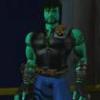
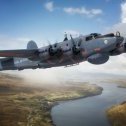
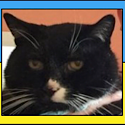


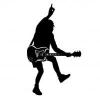

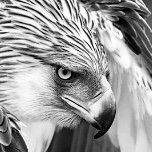
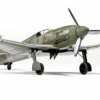
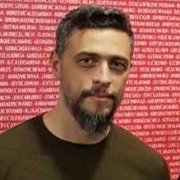

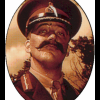
.thumb.jpg.d17ff607fc7e89ed057e63fcb6f2a888.jpg)
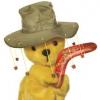
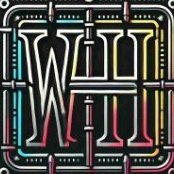

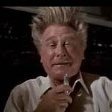
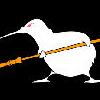
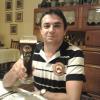
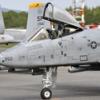
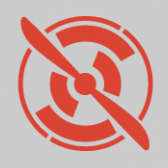
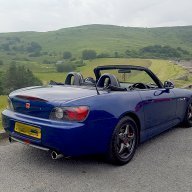
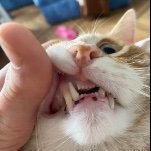
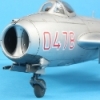
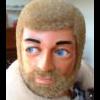


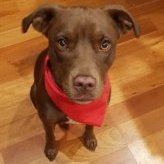

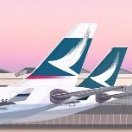
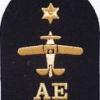

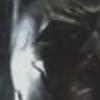
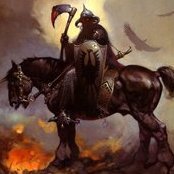
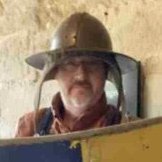
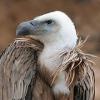
.thumb.jpeg.512869d47e412449d69d30d0295c1ae8.jpeg)

